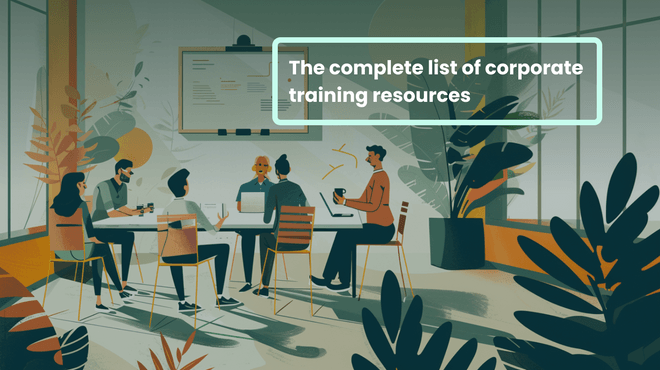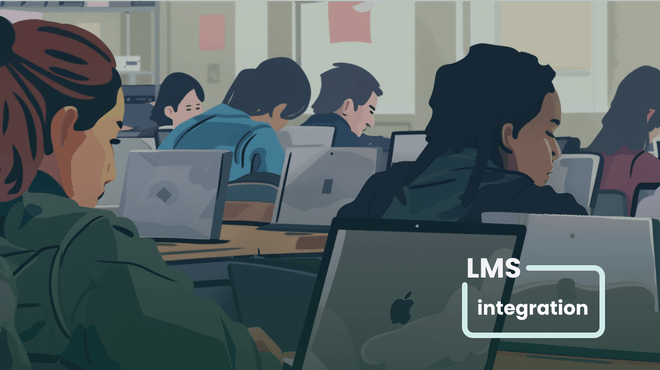Gamification in elearning: essential elements
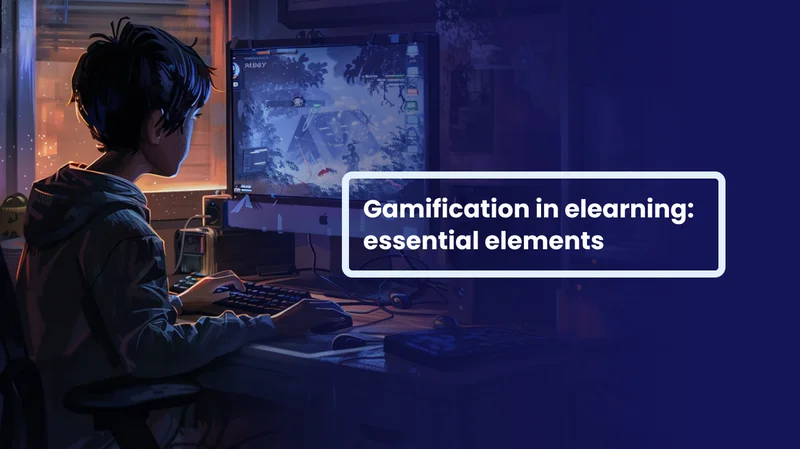
Games are addictive and have held people’s attention for ages. Yet, there has always been a conflict between gaming and traditional education, where games have been considered distractions for students.
Good news, this is no longer the case.
Research shows that 90% of employees say gamification makes them more productive at work. And 67% of students agree that gamified learning is more engaging and motivating than traditional classes.
Twelve essential elements in gamification
A number of elements are crucial when implementing gamification in eLearning.

Essential elements in gamification
1. Leaderboards
Based on the game you’re playing, leaderboards are used to rate your performance within the learning system. They enhance competition and help learners become more consistent in their education.
Yet, learners should be able to opt out of leaderboards if they feel uncomfortable competing with others. This ensures that introverted students aren’t alienated.
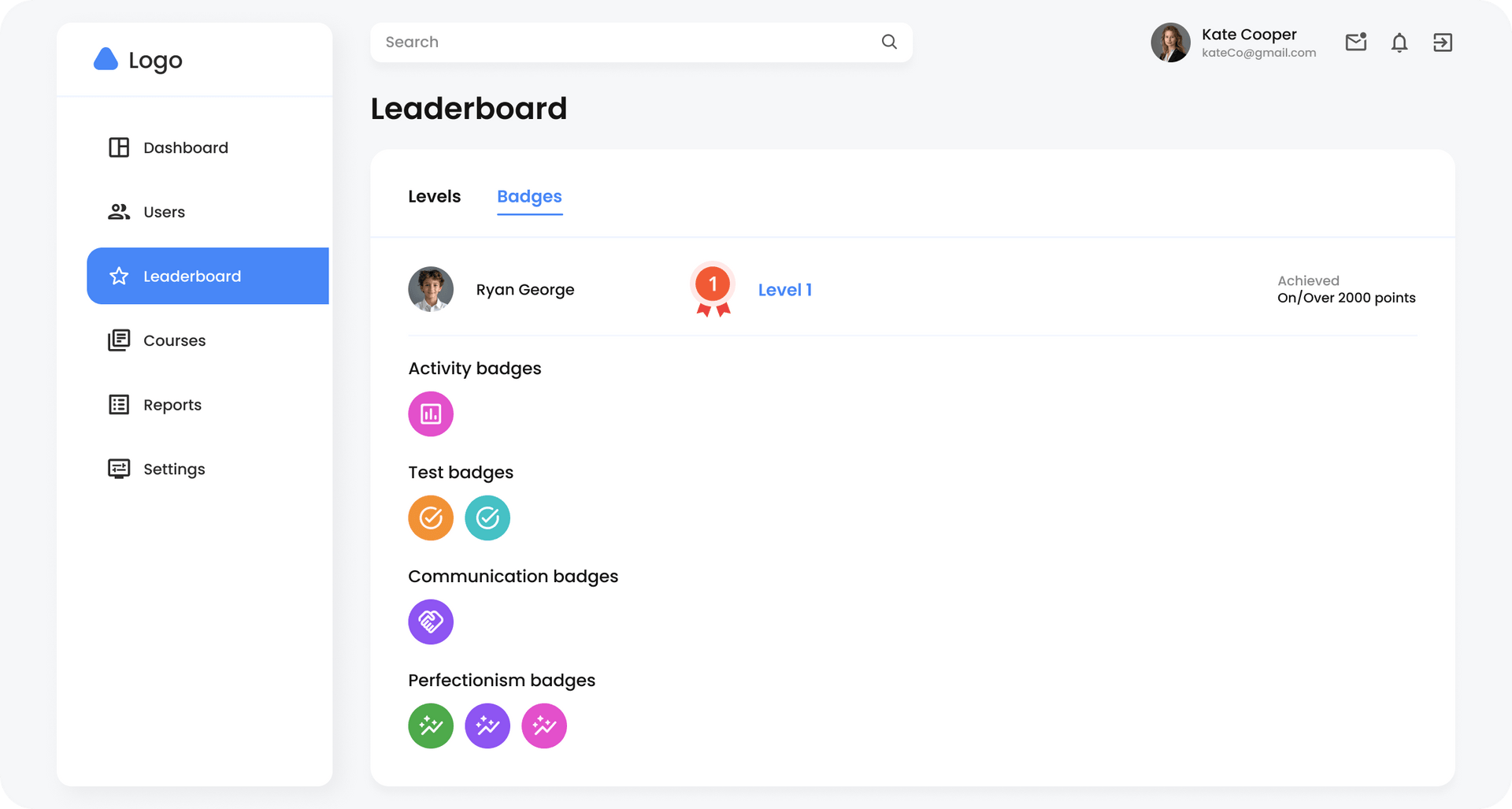
Leaderboards in our elearning projects
2. Levels
Many learning platforms now make use of levels. Based on how the game was built, levels can have unique characteristics.
They help learners find out what skill level they’ve attained, which encourages them to drive forward for improvements. When used directly on the eLearning platform, it can measure each learning level’s difficulty.
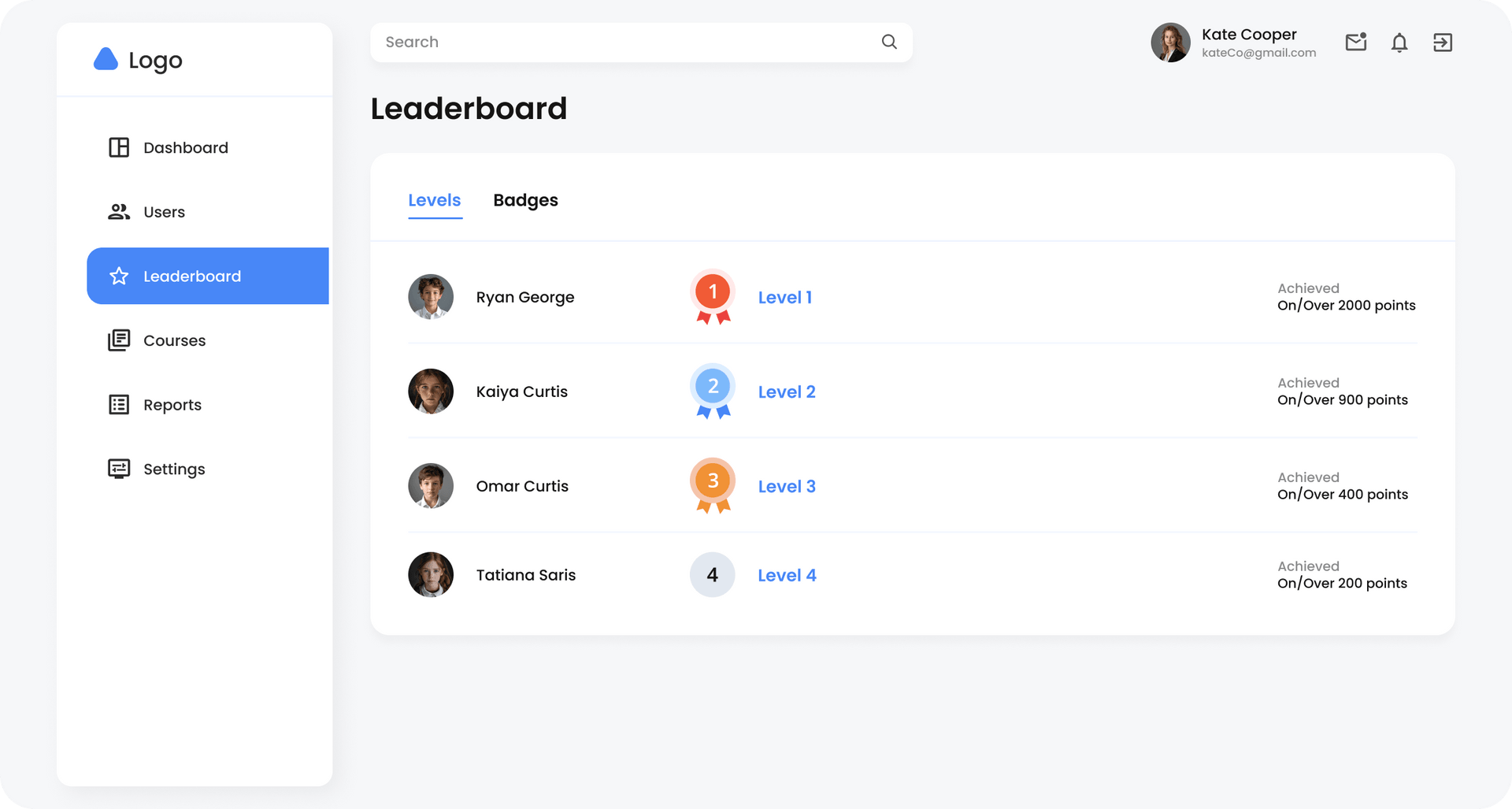
Levels in our elearning projects
Advanced custom LMS for the US EdTech giant
A WCAG-compliant and user-friendly platform with the wide opportunities of adding different kinds of materials.Take a look!
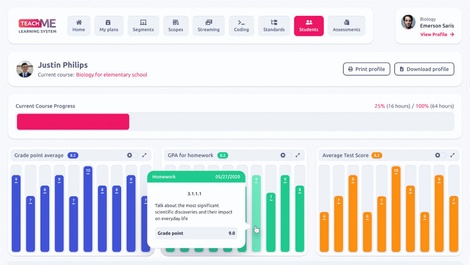
3. Quests
One feature that makes gamification appeal to learners is the choice of terms. When you see the word “quest”, there is a motivation for an adventure, and LMS can use this to present assignments with rewards at the end.
Quests are more likely to be met with enthusiasm and follow through than direct assignments.
4. Points
Points are a vital part of gamification as they help with grading learners and tracking progress. They can also be used alongside leaderboards to rank top-performing students.
Depending on the service, students can also collect them to get rewards.
5. Badges
If you are looking for a virtual pat on the back, then badges are just the right element to use.
Badges can come in fanciful designs or be plain, but their aim is usually the same. They are used as a reward system for taking specific actions or completing certain milestones.
Learners are often encouraged to show off their badges after getting them.

Badges in our elearning projects
6. Certificates
Certificates are like badges, but they are often given at the end of a course or module. Certificates often hold more weight than badges. If used effectively, they could be a highly motivating factor for students to complete their learning.
7. Virtual currencies
According to the form of learning being used, virtual currencies in games can be adapted to a student’s learning process. Students can also use them to get extra perks while learning.
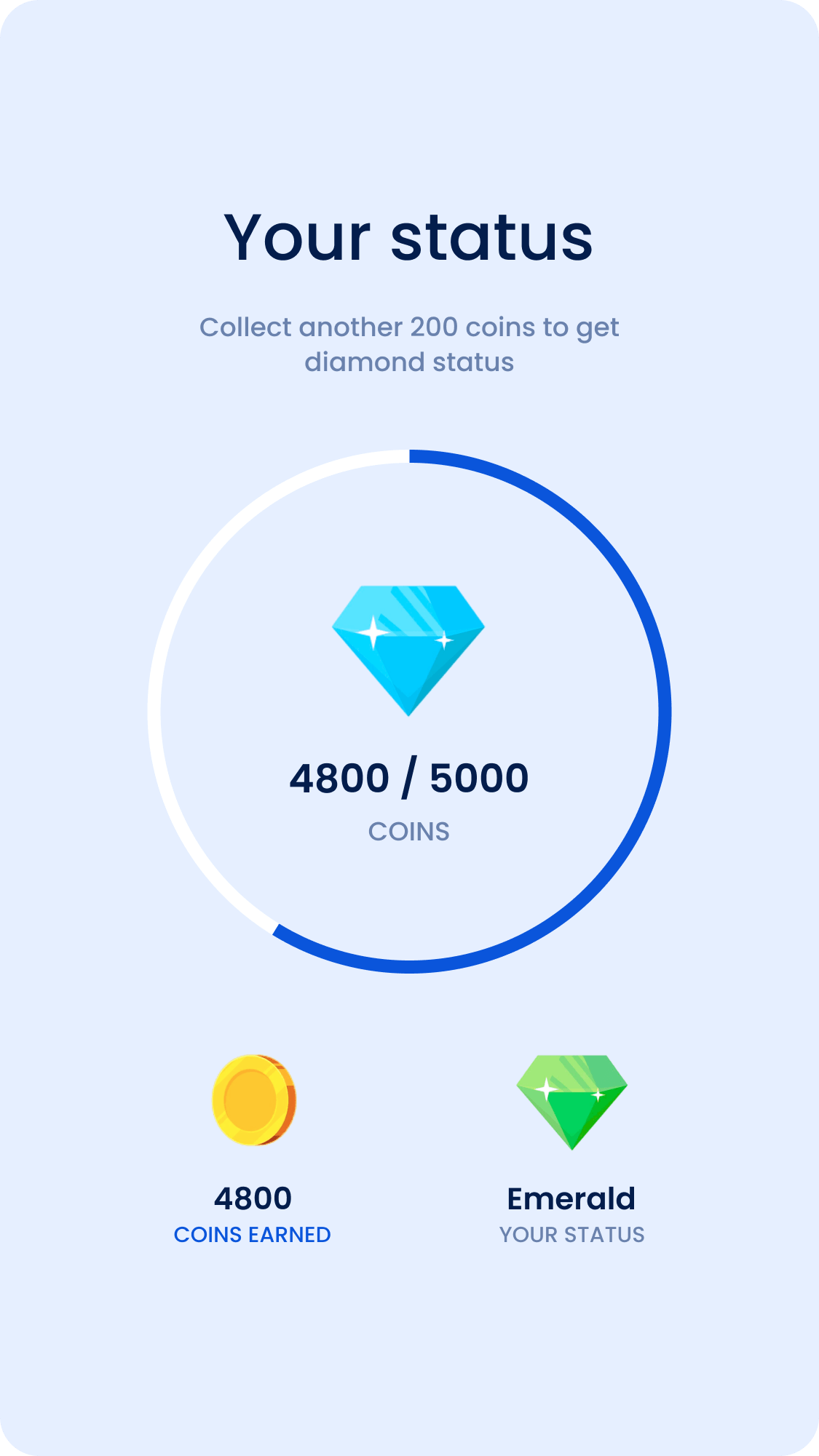
Virtual currencies example
8. Daily check-in
This gamification element can effectively keep learners on track with their learning. Daily check-ins are effective when logins are displayed on entry into the learning platform.
This element can work hand in hand with badges and point systems to increase students’ interest in the learning process.
9. Avatars
Avatars are an online representation of a character in a game. This online representation can be transferred into learning platforms.
Each student has their separate online avatars. These avatars can make it easier for students to receive badges and leaderboard placement. It is also crucial for students to give clear but not too private information concerning their details when creating their avatars.
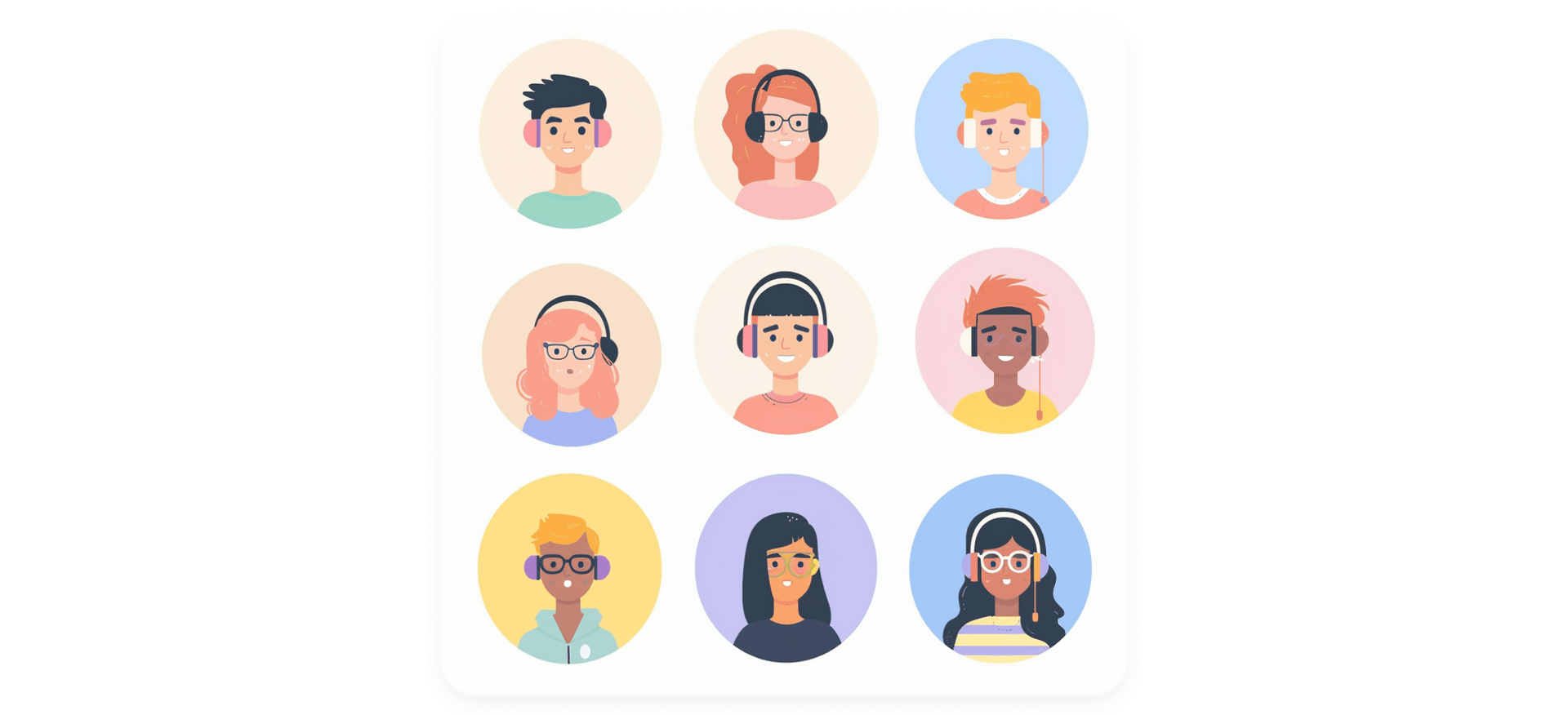
Avatars examples
10. Virtual environments
Virtual environments refer to the way learning platforms are created. The more gamelike and interactive the platform is, the more interested students are in learning.
Creating a virtual environment isn’t compulsory. But a virtual environment would boost your odds of making the most of the gamification of your training process.
11. Collectibles
Humans have a knack for collecting things, from baseball cards to coupons and other extrinsic or intrinsic value items. This can be used in making eLearning platforms more fun for students.
Collectibles can be distributed occasionally across platforms and encourage learners to get them.
12. Maps
Maps are an essential part of any adventure game and can translate into motivating factors for students in their learning process.
A map can take various forms. It could be a one-line journey from one end to another, with progress reflecting on the bar as the student takes steps in the learning process.
It could also take the form of a detailed map showing the entire learning journey to the student from the beginning. Learners can grasp their tasks with a good map system.
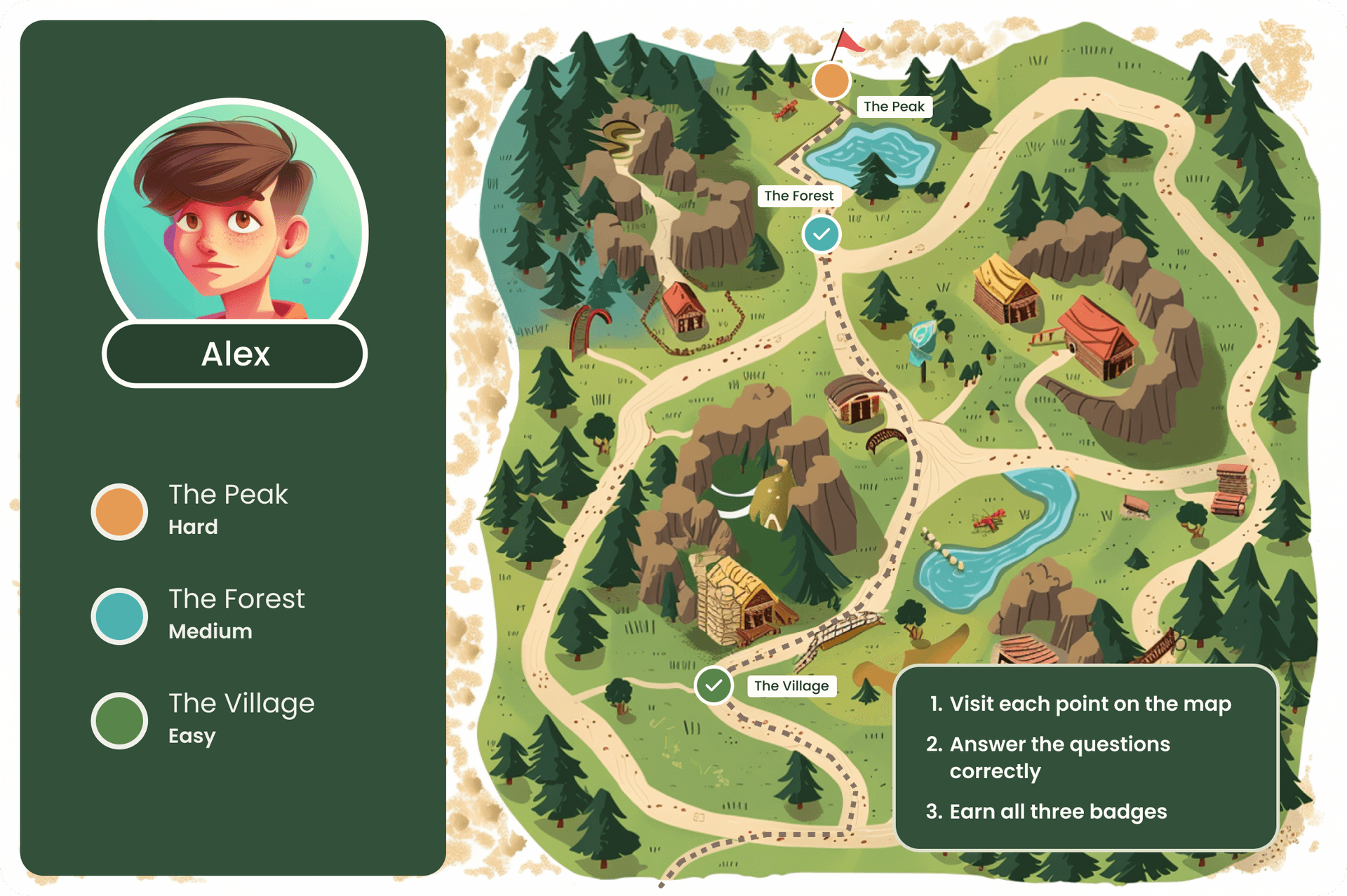
Maps example
Wrapping up
Gamification in eLearning has gradually become an irresistible part of attracting students and ensuring they complete their learning process.
Students benefit from an enhanced learning experience and longer-term retention of information when they are familiar with the components of gamification and the appropriate strategies to apply them.
Keep in mind that your eLearning platform doesn’t necessarily need to incorporate each of these elements. Some are required regardless of what subject is covered, while others are elective.
Learning to combine the appropriate features will yield commendable outcomes for students and their instructors.
Do you have any questions left? Feel free to reach out.
